 Last night Apple launched 3 new products (as we briefly noted). A new versionof iTunes, updated iMacs and as expected, a video-enabled iPod.
Last night Apple launched 3 new products (as we briefly noted). A new versionof iTunes, updated iMacs and as expected, a video-enabled iPod.
New iMac G5
They’re faster and thinner (and the 20″ version is cheaper than itsprevious incarnation). They now include an iSight (video camera) builtinto the unit and come with new software “Front Row” which include anIR remote, looking suspiciously like an iPod shuffle which attaches tothe side of the iMac (the IR receiver is allegedly hidden behind theApple logo).
Already considered a design classic, the new iMacs look even better, butin reality though Apple have added more power for the buck, they’rejust iMacs. However the real innovation is Front Row which is designed to directly compete with Microsoft’s Media PC, and it does this by using Apple iLife applications being simple to use and control(the Microsoft Media PC has 24+ buttons, the Apple remote has 6).
 Front Row gives extremely simple access to content stored on the iMacincluding music through iTunes, videos (including the newly availablevideo content that’s available through iTunes), photos stored in iPhotoand DVD’s though iDVD. The remote works up to 30 feet away from theunit.
Front Row gives extremely simple access to content stored on the iMacincluding music through iTunes, videos (including the newly availablevideo content that’s available through iTunes), photos stored in iPhotoand DVD’s though iDVD. The remote works up to 30 feet away from theunit.
Currently Apple are not saying whether Front Row will be available asan upgrade for existing Mac users, however the new universal iPod dockdoes have an IR receiver on the front and the remote is available as aseparate purchase so an educated guess would be that it will be.
The iSight is a nice addition (the add-on version costs over GBP 100),but it’s a fantastic webcam. It obviously works with iChat (Apple’s IMsystem) allowing video conferencing with up to 3 other people, andthere’s now Photo Booth which allows snap-shots to be taken and thenmanipulated by adding effects etc.
Both the 17″ and 20″ come with 8x SuperDrives which are now dual-layer(DVD+R DL/DVD+-RW/CD-RW), they have a PCI-X bus (faster than the oldPCI bus) and PCI-X video cards (17″ is a Radion X600 PRO and the 20″ aX60 PRO XT). Both come with 512MB RAM expandable to 2.5GB, the 17″ witha 160GB SATA disk and 20″ with 250GB. CPU speeds have been upped to1.9GHz (17″) and 2.1GHz (20″). UK pricing starts at GBP 899 (inc VAT)for the 17″ and GBP 1,199 for the 20″.
 Since there’s no base unit (everything is built into the actualdisplay) the amount is space they require is minimal. They’d look justas good on a desk as in the living room.
Since there’s no base unit (everything is built into the actualdisplay) the amount is space they require is minimal. They’d look justas good on a desk as in the living room.
Video-capable iPod
The 5th generation iPod is here, though probably not what manyexpected. It’s just a prettier, thinner version of the iPod Photo witha larger screen (now 2.5″). The iPod’s lines are now much closer tothat of the new iMacs (excepting the click wheel and of course it nowgenerally available in black as well as white).
The screen is crisp, clear and remarkably bright, though it’s only320 x 240 resolution, which is good enough to watch music videos andsuch like, but rather small compared to other devices on the market.However album art, podcasts etc. with some aspect of video (or photo)content does look very good. Though Apple have probably alreadydeveloped a widescreen video iPod, why launch it now just to give thecompetition a chance to catch-up? The new iPod is a step change overexisting versions and everyone is again going to have to compete withit.
Currently video can only be imported through iTunes (like photos),however this is likely to be a move to appease the movie studios.Whether they’ll be an upgrade to iTunes to import (noncopyright/encrypted) video content is yet to be seen, it might nothappen for a while. The iPod plays MPEG4 and H.264 video content.
If the iPod is plugged into a dock, the video can be sent to anexternal display like a TV, but it’s still only sent at 320 x 240 whichlooks pixelated.
There are a few extras in-line with the nano, such as extra clocks,being able to lock the unit, more games etc. A real improvement is thecalendar application which suits the new display perfectly.
Pricing is GBP 219 for the 30GB version and GBP 299 for 60GB (both incVAT).
iTunes 6
 iTunes 5 was launched with the iPod nano, and a month later there’s nowiTunes 6 to go with the 5th generation model. The main new advance isvideo content, there are now around 2000 music videos available on theiTunes music store (unfortunately there’s still a huge pricedifferential between the US and UK with a music video costing $1.99 inthe US and GBP 1.89 in the UK – with the UK getting panned on price, as usual).
iTunes 5 was launched with the iPod nano, and a month later there’s nowiTunes 6 to go with the 5th generation model. The main new advance isvideo content, there are now around 2000 music videos available on theiTunes music store (unfortunately there’s still a huge pricedifferential between the US and UK with a music video costing $1.99 inthe US and GBP 1.89 in the UK – with the UK getting panned on price, as usual).
Since Steve Jobs (CEO of Apple) is also CEO of Pixar (the animationcompany that made Finding Nemo, The Incredibles etc) there’s 6 PixarShorts also available for purchase on the iTunes store (same price as amusic video).
In the US there’s also terrestrial TV shows available from ABC and theDisney Channel (Lost, Desperate Housewives and others). Why may TVshows available as downloads when you can buy DVD sets? Because itgives revenue for PVR opportunities i.e. it’s unlikely someone willdownload every episode of Lost, but they will download and pay for theepisode they missed last night (and can watch it on their hour commuteto work), iTunes makes it incredibly easy to do this, rather thanworking out how to set your PVR, and then getting the content off it.Though content can be watched through iTunes, it’s likely more peoplewill use it with their iPod.
It’s somewhat odd that Apple are working with Disney as Pixar have beenvery publicly rowing with Disney over distribution agreements fortheir films. What people forget is that Pixar are contracted to make 6new films for Disney, so assuming that’s one a year that’s 6 years tosettle the arguments (even lawyers can work to those timescales). It’sjust a matter of money, Pixar want more and Disney don’t want to payit. By the time 6 years are up it’s likely they’ll be buddies again andboth with have reached a happy compromise.
 The video aspects of the iTunes store, though limited at the moment,are a major break-through (even ground-breaking) especially with thecurrent shows being available. Disney obviously have a huge amount ofcontent they could make available if all the legal intricacies can besorted. Once one studio cracks, they’ll all follow suit.
The video aspects of the iTunes store, though limited at the moment,are a major break-through (even ground-breaking) especially with thecurrent shows being available. Disney obviously have a huge amount ofcontent they could make available if all the legal intricacies can besorted. Once one studio cracks, they’ll all follow suit.
It shows how successful iTunes is considering that arch rivals Realand Microsoft have just made an agreement to share technology etc andjoin forces rather than fighting with each other to try and expand the25% of the market they JOINTLY command.
There’s some other new features of iTunes, gifting which allows anyoneto give away a track, albums, music videos or their playlists to anyother registered iTunes user (i.e. the gifter purchases it and it’smade available to another user for download).
Just for You is in beta, whereby iTunes suggest purchases based onprevious behaviour – a suggestion engine.
One of the most request features for podcasts has been user ratings andthis is now available, so like a podcast you can now rate it and themore ratings it get, the higher up the listings it goes.
Considering Apples future
 Apple’s future has definitely been shaped by the iPod (they sold 1mNanos in 17 days – how many returned was, not surprisingly undefined) which is molding how the company moves forward.
Apple’s future has definitely been shaped by the iPod (they sold 1mNanos in 17 days – how many returned was, not surprisingly undefined) which is molding how the company moves forward.
Macsare becoming companions for iPods rather than the other way around. Keyto all of this is content and iTunes is definately leading the way with75%+ market share (globally) and higher in specific markets (UK it’sover 85%).
If Apple can crack the video market, they’re going to dominate for along time, and though the 5Gen iPod is a step in the right direction,it’s just that. Though Apple never pre-announce products you can besure the 6Gen and even 7Gen iPods are already designed and waiting in thewings and they’ll be full blown widescreen systems.
Macs are going to change as Apple move away from IBM Power processorsto Intel CPUs, but that’s an internal change and they’ll stillergonomically beat the pants of almost everything else out there.
Apple
 Sky have been mulling about an IPTV service for a while. They were in discussions with THUS who provide the telecoms back-end for their SkyTalk service and helped Sky with their WapTV services, they were talking about doing an IPTV trial with THUS, but THUS pulled out of the LLU arena due to lack of cash. They were looking at spending £20m+ on just a trial.
Sky have been mulling about an IPTV service for a while. They were in discussions with THUS who provide the telecoms back-end for their SkyTalk service and helped Sky with their WapTV services, they were talking about doing an IPTV trial with THUS, but THUS pulled out of the LLU arena due to lack of cash. They were looking at spending £20m+ on just a trial.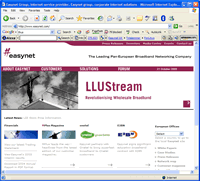 Sky have got the resources to bolster a depressed telecoms market and put the necessary cash into a company to achieve a reasonable roll-out. Of course they also have the content that consumers want. If another “triple-play” broadband provider wants to get into the game (including BT Retail), Sky can make it very difficult for them by not licensing Sky content (of course Ofcom may force them to, as they have done in the cable industry).
Sky have got the resources to bolster a depressed telecoms market and put the necessary cash into a company to achieve a reasonable roll-out. Of course they also have the content that consumers want. If another “triple-play” broadband provider wants to get into the game (including BT Retail), Sky can make it very difficult for them by not licensing Sky content (of course Ofcom may force them to, as they have done in the cable industry).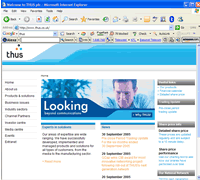 Sky are also in an odd position as they’ll probably utilise MPEG-4 as the coding system, which means they’ll have to modify (or supplement) their existing transmission systems which are all based on MPEG-2. They’ll also have to introduce a new IP based set-top-box. However they’ll have to be carefull as to not make it too feature rich compared to existing STB’s used to decode the satellite transmissions or existing users will want to migrate to the broadband version – which will cost Sky a huge ammount as the exisitng boxes are considerably subsidised.
Sky are also in an odd position as they’ll probably utilise MPEG-4 as the coding system, which means they’ll have to modify (or supplement) their existing transmission systems which are all based on MPEG-2. They’ll also have to introduce a new IP based set-top-box. However they’ll have to be carefull as to not make it too feature rich compared to existing STB’s used to decode the satellite transmissions or existing users will want to migrate to the broadband version – which will cost Sky a huge ammount as the exisitng boxes are considerably subsidised. Mobile phone giants Nokia have announced three new phone models aimed at the “style-conscious” market.
Mobile phone giants Nokia have announced three new phone models aimed at the “style-conscious” market. Desperately described as a phone for “trend-setting men and women who enjoy being the centre of attention,” the highly distinctive 7380 looks like it’s come from the same bonkers design studio as the
Desperately described as a phone for “trend-setting men and women who enjoy being the centre of attention,” the highly distinctive 7380 looks like it’s come from the same bonkers design studio as the  Employing a sliding keypad, the Nokia 7370 comes with a 2-inch QVGA colour screen (320 x 240 pixels), stereo speakers with 3D sound effects and a 1.3 megapixel camera (8x zoom) onboard.
Employing a sliding keypad, the Nokia 7370 comes with a 2-inch QVGA colour screen (320 x 240 pixels), stereo speakers with 3D sound effects and a 1.3 megapixel camera (8x zoom) onboard. Nokia 7360
Nokia 7360 Sony are keen for us to ‘redefine’ our living rooms with the release of their new VAIO XL1 Digital Living System, a twin box offering combining a high-end multimedia PC with a 200-disc media changer/recorder.
Sony are keen for us to ‘redefine’ our living rooms with the release of their new VAIO XL1 Digital Living System, a twin box offering combining a high-end multimedia PC with a 200-disc media changer/recorder. A similar process takes place for movies, where an in-depth synopsis and star, cast, director and producer details etc are automatically downloaded and made accessible onscreen through the included wireless keyboard or remote control.
A similar process takes place for movies, where an in-depth synopsis and star, cast, director and producer details etc are automatically downloaded and made accessible onscreen through the included wireless keyboard or remote control. There’s no denying that the recording functionality seems mighty impressive to us, with the XL1 able to automatically and sequentially record up to 200 audio CDs from the media changer to the hard drive.
There’s no denying that the recording functionality seems mighty impressive to us, with the XL1 able to automatically and sequentially record up to 200 audio CDs from the media changer to the hard drive. To ensure that your late night listening pleasure isn’t spoilt by the sound of a mass of Boeing 747-like fans starting up, the XL1 system uses liquid-cooled components for quiet operation.
To ensure that your late night listening pleasure isn’t spoilt by the sound of a mass of Boeing 747-like fans starting up, the XL1 system uses liquid-cooled components for quiet operation. Going into Gmail today we noticed “Google Mail in the UK” highlighted in red on the top line. Ever curious, clicking it revealed that from today, 19 October 2005, all new accounts created in the UK will use the domain googlemail.com, not the previous Gmail.com.
Going into Gmail today we noticed “Google Mail in the UK” highlighted in red on the top line. Ever curious, clicking it revealed that from today, 19 October 2005, all new accounts created in the UK will use the domain googlemail.com, not the previous Gmail.com.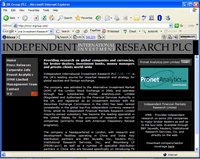 IIIR’s G-mail is an email service that is part of their offering to their clients, enabling them to send IIIR’s research to their clients clients (if you follow). G-mail is an abbreviation of the full name – Graffiti-mail.
IIIR’s G-mail is an email service that is part of their offering to their clients, enabling them to send IIIR’s research to their clients clients (if you follow). G-mail is an abbreviation of the full name – Graffiti-mail.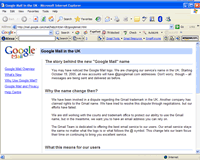 Given Google’s world-shattering valuation, it’s hardly surprising (if not a little disheartening) to hear that there are people queuing up to find a dispute with Google.
Given Google’s world-shattering valuation, it’s hardly surprising (if not a little disheartening) to hear that there are people queuing up to find a dispute with Google. There still seems to be plenty of cash slopping around the broadband sector, as PIPEX has just waved its weighty wad in the direction of Freedom to Surf (F2S) and bought the company for £10m.
There still seems to be plenty of cash slopping around the broadband sector, as PIPEX has just waved its weighty wad in the direction of Freedom to Surf (F2S) and bought the company for £10m. It’s uncertain whether existing Freedom2Surf customers already using LLU via the EasyNet LLUStream range will stay where they are or be shunted on to a PIPEX LLU product.
It’s uncertain whether existing Freedom2Surf customers already using LLU via the EasyNet LLUStream range will stay where they are or be shunted on to a PIPEX LLU product. Peter Dubens, Chairman of PIPEX, said: “In the light of our recent decision to unbundle an initial 60 exchanges, we are very pleased to add F2S to the PIPEX group, which will further increase the density of customers around each exchange, thus improving the return on capital and enabling us to offer higher speeds to a greater number of our customers. F2S’s customers will be able to benefit from our extensive network and the broad range of services we provide.”
Peter Dubens, Chairman of PIPEX, said: “In the light of our recent decision to unbundle an initial 60 exchanges, we are very pleased to add F2S to the PIPEX group, which will further increase the density of customers around each exchange, thus improving the return on capital and enabling us to offer higher speeds to a greater number of our customers. F2S’s customers will be able to benefit from our extensive network and the broad range of services we provide.” Sony Ericsson has today announced the launch of their first 3G (UMTS) tri-band GPRS Walkman phone, the W900.
Sony Ericsson has today announced the launch of their first 3G (UMTS) tri-band GPRS Walkman phone, the W900. The phone comes stuffed with multimedia widgets, with a built-in FM radio and 2 megapixel auto-focus flash camera offering 8x digital zoom and the ability to record and playback video at a nippy 30fps.
The phone comes stuffed with multimedia widgets, with a built-in FM radio and 2 megapixel auto-focus flash camera offering 8x digital zoom and the ability to record and playback video at a nippy 30fps. In line with its Walkman branding, the phone has dedicated music controls, letting users scroll through play lists, artists or individual songs, and a bundled LCD remote control.
In line with its Walkman branding, the phone has dedicated music controls, letting users scroll through play lists, artists or individual songs, and a bundled LCD remote control. The W900 UMTS Walkman phone will be commercially available in black or white finished by the end of Q4 2005 in two versions:
The W900 UMTS Walkman phone will be commercially available in black or white finished by the end of Q4 2005 in two versions: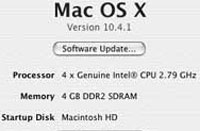 Did someone say fast?
Did someone say fast? Couch Potatoes Rejoice
Couch Potatoes Rejoice Internet? Break? Yeah right…
Internet? Break? Yeah right… Leo Kuvayev, the leader of the largest Spam gang, and six of his business partners have been handed a $37m (~E30m, ~£21m) fine by the courts in Massachusetts.
Leo Kuvayev, the leader of the largest Spam gang, and six of his business partners have been handed a $37m (~E30m, ~£21m) fine by the courts in Massachusetts. This was no small operation. Microsoft collected more than 45,000 spam messages believed to be from the Internet Spam Gang in just 22 days between 12 June and 4 July 2004. Not bad, with an average of 2,000 emails per day.
This was no small operation. Microsoft collected more than 45,000 spam messages believed to be from the Internet Spam Gang in just 22 days between 12 June and 4 July 2004. Not bad, with an average of 2,000 emails per day. He appears very enterprising, does’t he? He’s also listed as the 2nd worst spammer on the
He appears very enterprising, does’t he? He’s also listed as the 2nd worst spammer on the 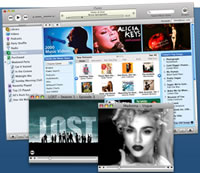 * I downloaded and installed iTunes6. Takes 5-10 minutes. No big deal. iTunes6 has the same basic interface and purchasing/sampling system as previous versions of iTunes.
* I downloaded and installed iTunes6. Takes 5-10 minutes. No big deal. iTunes6 has the same basic interface and purchasing/sampling system as previous versions of iTunes.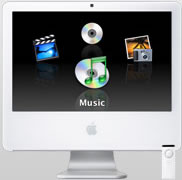 * File sizes: Killers video: 20.1 mb; Desperate Housewives episode: 208.6 mb. Both were MPEG-4 video files.
* File sizes: Killers video: 20.1 mb; Desperate Housewives episode: 208.6 mb. Both were MPEG-4 video files.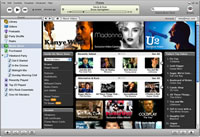 * I’m sure there are some underlying copyright / “rip-off Britain” issues at play here. I’m just not smart enough to figure them out. But there is a problem when the popular television shows are not available on iTunes-UK and the same music video is 1.89 GBP or about $3.30 – that’s $1.30 extra for each music video that UK customers must pay.
* I’m sure there are some underlying copyright / “rip-off Britain” issues at play here. I’m just not smart enough to figure them out. But there is a problem when the popular television shows are not available on iTunes-UK and the same music video is 1.89 GBP or about $3.30 – that’s $1.30 extra for each music video that UK customers must pay. Last night Apple launched 3 new products (as we
Last night Apple launched 3 new products (as we 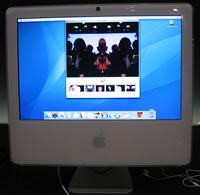 Front Row gives extremely simple access to content stored on the iMacincluding music through iTunes, videos (including the newly availablevideo content that’s available through iTunes), photos stored in iPhotoand DVD’s though iDVD. The remote works up to 30 feet away from theunit.
Front Row gives extremely simple access to content stored on the iMacincluding music through iTunes, videos (including the newly availablevideo content that’s available through iTunes), photos stored in iPhotoand DVD’s though iDVD. The remote works up to 30 feet away from theunit.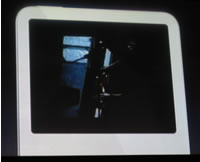 Since there’s no base unit (everything is built into the actualdisplay) the amount is space they require is minimal. They’d look justas good on a desk as in the living room.
Since there’s no base unit (everything is built into the actualdisplay) the amount is space they require is minimal. They’d look justas good on a desk as in the living room. iTunes 5 was launched with the iPod nano, and a month later there’s nowiTunes 6 to go with the 5th generation model. The main new advance isvideo content, there are now around 2000 music videos available on theiTunes music store (unfortunately there’s still a huge pricedifferential between the US and UK with a music video costing $1.99 inthe US and GBP 1.89 in the UK – with the UK getting panned on price, as usual).
iTunes 5 was launched with the iPod nano, and a month later there’s nowiTunes 6 to go with the 5th generation model. The main new advance isvideo content, there are now around 2000 music videos available on theiTunes music store (unfortunately there’s still a huge pricedifferential between the US and UK with a music video costing $1.99 inthe US and GBP 1.89 in the UK – with the UK getting panned on price, as usual).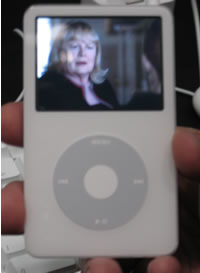 The video aspects of the iTunes store, though limited at the moment,are a major break-through (even ground-breaking) especially with thecurrent shows being available. Disney obviously have a huge amount ofcontent they could make available if all the legal intricacies can besorted. Once one studio cracks, they’ll all follow suit.
The video aspects of the iTunes store, though limited at the moment,are a major break-through (even ground-breaking) especially with thecurrent shows being available. Disney obviously have a huge amount ofcontent they could make available if all the legal intricacies can besorted. Once one studio cracks, they’ll all follow suit.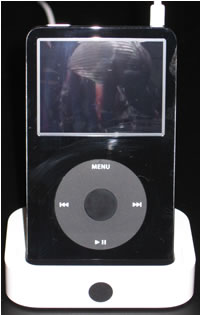 Apple’s future has definitely been shaped by the iPod (they sold 1mNanos in 17 days – how many returned was, not surprisingly undefined) which is molding how the company moves forward.
Apple’s future has definitely been shaped by the iPod (they sold 1mNanos in 17 days – how many returned was, not surprisingly undefined) which is molding how the company moves forward.